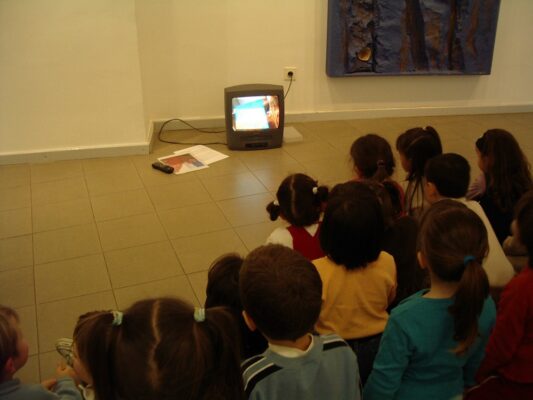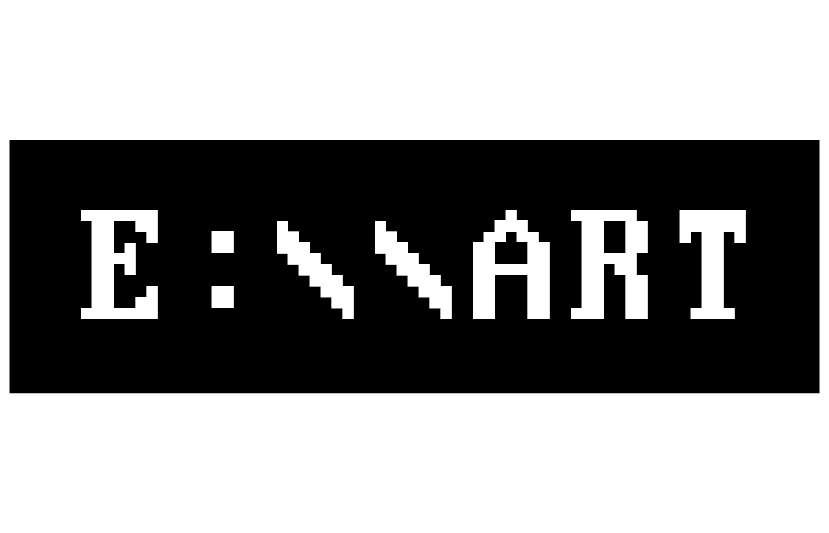Search
To search for an exact match, type the word or phrase you want in quotation marks.
A*DESK has been offering since 2002 contents about criticism and contemporary art. A*DESK has become consolidated thanks to all those who have believed in the project, all those who have followed us, debating, participating and collaborating. Many people have collaborated with A*DESK, and continue to do so. Their efforts, knowledge and belief in the project are what make it grow internationally. At A*DESK we have also generated work for over one hundred professionals in culture, from small collaborations with reviews and classes, to more prolonged and intense collaborations.
At A*DESK we believe in the need for free and universal access to culture and knowledge. We want to carry on being independent, remaining open to more ideas and opinions. If you believe in A*DESK, we need your backing to be able to continue. You can now participate in the project by supporting it. You can choose how much you want to contribute to the project.
You can decide how much you want to bring to the project.

E:\\ART: Center for Mediation, Education, and Contemporary Art is a public service organization that operates as a factory for creation for contemporary art and creative processes, an educational initiative to foster critical and creative abilities. The organization’s main activity is formal and non-formal education, as well as collaborative and community-based cultural and artistic practices, linking art, education, and civil society through mediation processes. E:\\ART operates as a laboratory, a space for trial and error that opens new paths in research and experimentation between art and education, and it also offers specialized training programs, cultural mediation, and activities aimed at specific audiences.
What does it mean to be a center for mediation, education, and contemporary art? Since it was established, E:\\ART has worked at the intersection of educational and artistic processes, with special attention to community, intergeneration, and other approaches that allow us to rethink the relationship between art and education. We are interested in defining and framing practices based on the work of artists-in-residence and other collaborators in order to create a platform for research, thought, and artistic practice. Our communication not only seeks to disseminate the activities we carry out but also to make the processes visible, sharing materials that allow for reflection on thought and research related to art and education. For the past two years, and with the arrival of a new management team, E:\\ART has been redesigning the Center from a new perspective. We now structure our work around four fundamental axes that help us define forms of mediation and understand contemporary art as a tool for developing curricular skills through cross-curricular projects.
1.Archive E:\\ART: Project Antoni Amat. Rectoria Vella de Sant Celoni, 1997.
2, 3, y 4. Archive E:\\ART: Project Nexes de la Memòria. Can Xerracan, Montornès del Vallès, 1997.
5.Archive E:\\ART: Project Thambos 2. Sala Memorial Vicenç Ros, Martorell, 1998
However, in the cultural sphere, we often face the difficulty of defining artistic practice, educational experience, and the development of mediation. Is it really necessary to differentiate these practices? What determines knowledge? Where does our insistence on departmentalizing different ways of understanding and practicing ourselves come from? Should we embrace disciplines or instead navigate through them to construct a broader and more enriching vision? First and foremost, it is essential to accept a concrete reality, that is, that the division of categories, disciplines of knowledge, legitimacies, and epistemologies not only structure and segment knowledge, but also the hypotheses we might formulate in response to everyday situations. A clear example is the current separation between art and education, a split that has contributed to a gap between artistic practice and society. To understand current academic trends, we must understand their origin in Modernity (Eduardo Galeano, 2022). This period, which began in the 15th century with the colonization of America, placed human beings at the center of the universe, thus imposing a restricted idea of knowledge and human relations that profoundly conditioned the way knowledge was constructed. Modernity as a method, with its taxonomic obsession for classifying and categorizing, not only created bureaucracy and methods of approval as control mechanisms, but also established principles of visual culture, departmentalizing knowledge into epistemological structures that continue to determine our relationship with knowledge in disciplines such as biology, naturalism, arts, and sciences, specialized approaches to conceiving the world.
Over time, science began to legitimize itself and to progressively replace religion as a source of knowledge about the world. By the end of the 19th century, social studies adopted the term “science” to gain academic validation for the so-called “scientific method.” The specialization of disciplines helped consolidate a rigid structure to classify knowledge. Today, however, we are trying to overcome this specialization through cross-curricular approaches.
At the same time, artistic practices inherited the stereotype of the “misunderstood” and tormented artist from Romanticism, and education took root as an instrument for transmitting officialized hegemonic knowledge. As a result, in contemporary times we have been left with a rigid concept of art and education, hindering a more global and comprehensive understanding of knowledge. According to Foucault, both hegemonic education and art, once institutionalized, operate within the exercise of biopolitics, that is, the politics that regulate and condition ways of life. It is in this context that visual education in schools has been relegated to “manual” knowledge, leisure time, or as a decorative resource, time dedicated to a subject that should be used for “more important” academic tasks such as mathematics or science, the true “parents” of world knowledge. It is significant and symptomatic that the current educational system does not require the presence of art specialists in schools while guaranteeing the teaching of religion, highlighting the scant importance given to visual culture as an educational element. Isn’t it ironic that in an immanently visual world we are still incapable of thinking and critically reading the images we consume and create?
Perhaps the time has come to definitively blur all classifications of knowledge, conceiving and practicing collaborative frameworks that present other ways of seeing ourselves, allowing for a more flexible, interdisciplinary, and enriching approach to knowledge. Are we capable of conceiving schools, art centers, museums, and the practice of mediation as collective tools to help build a society that embraces uncertainty, community experience, and establishes no boundaries between inside and out? How should we pay attention to processes and challenge the evaluation system as a learning objective? Can we (re)build institutions as transitions without stagnant knowledge driven by community impulses that blur hierarchies? It is crucial to find answers to these questions.
Bibliographic references:
“Galeano, Eduardo (2022). Ser como ellos. El capitalismo visto desde la periferia. Siglo XXI
“Focault, Michel” (1978). The Birth of Biopolitics
[Featured Image: Archive E:\\ART: Guinovart, Memòria del blau. Sala de exposiciones del Centro Cultural, Ripollet. Touring exhibiotion organized by Diputació de Barcelona (ODA), 2004]

E:\\ART is a non-profit organization with a public service mission that works through culture and creative processes as an educational action to foster people’s critical and creative capacity. The organization’s main activity is based on working with artists resident in our Center, offering them projects with which to increase their professionalization as artists and mediators, consolidating their careers and training in continuous development.
"A desk is a dangerous place from which to watch the world" (John Le Carré)